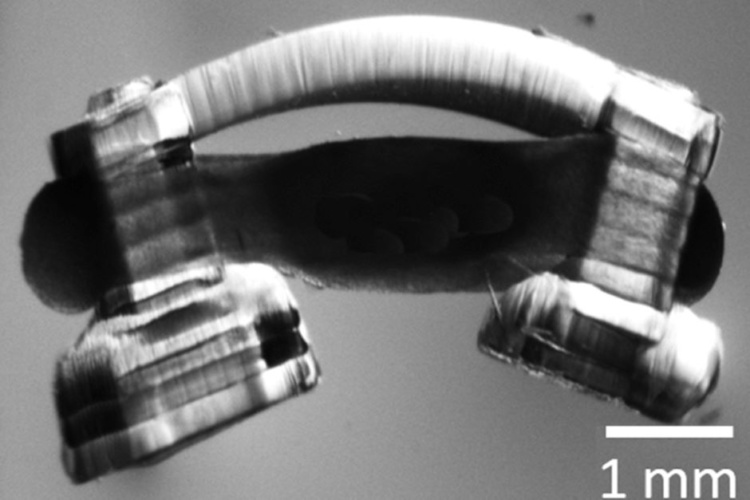
Previous biological robots - or bio-bots - could move forward by simple muscle contraction, but the integration of the spinal cord gives them a more natural walking rhythm, said study leader Martha Gillette, a professor of cell and developmental biology at the University of Illinois at Urbana-Champaign.
MORE FROM MEDICAL & HEALTHCARE
"These are the beginnings of a direction toward interactive biological devices that could have applications for neurocomputing and for restorative medicine," Gillette said in a statement.
The researchers have published their findings in APL Bioengineering.
To make the so-called spinobots, the researchers first printed two posts for legs and a flexible backbone, measuring a few millimetres across. Then, they seeded it with muscle cells, which grew into muscle tissue. Finally, they integrated a segment of lumbar spinal cord from a rat.
"We specifically selected the lumbar spinal cord because previous work has demonstrated that it houses the circuits that control left-right alternation for lower limbs during walking," said graduate student Collin Kaufman, the first author of the paper. "From an engineering perspective, neurons are necessary to drive ever more complex, coordinated muscle movements. The most challenging obstacle for innervation was that nobody had ever cultured an intact rodent spinal cord before."
According to UIUC, the researchers had to devise a method to extract the intact spinal cord and then culture it. They then had to integrate it onto the bio-bot and culture the muscle and nerve tissue together and do it in a way that the neurons form junctions with the muscle.
The researchers reportedly saw spontaneous muscle contractions in the spinobots, signalling that the desired neuro-muscular junctions had formed and the two cell types were communicating. To verify that the spinal cord was functioning as it should to promote walking, the researchers are said to have added glutamate, a neurotransmitter that prompts nerves to signal muscle to contract.
The glutamate caused the muscle to contract and the legs to move in a natural walking rhythm. When the glutamate was rinsed away, the spinobots stopped walking.
The researchers plan to further refine the spinobots' movement, making their gaits more natural. The researchers hope this small-scale spinal cord integration is a first step toward creating in vitro models of the peripheral nervous system, which they said is difficult to study in live patients or animal models.










Fusion inches closer as ITER completes magnet system
I believe the purpose of ITER isn't to make usable power, it is a research project which will be used to design the first generation of actual...